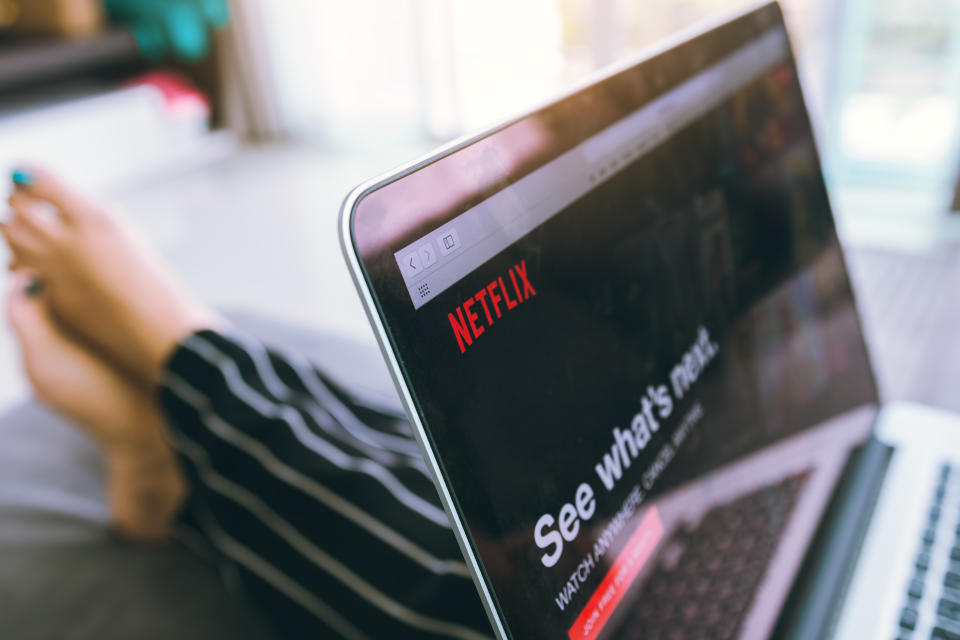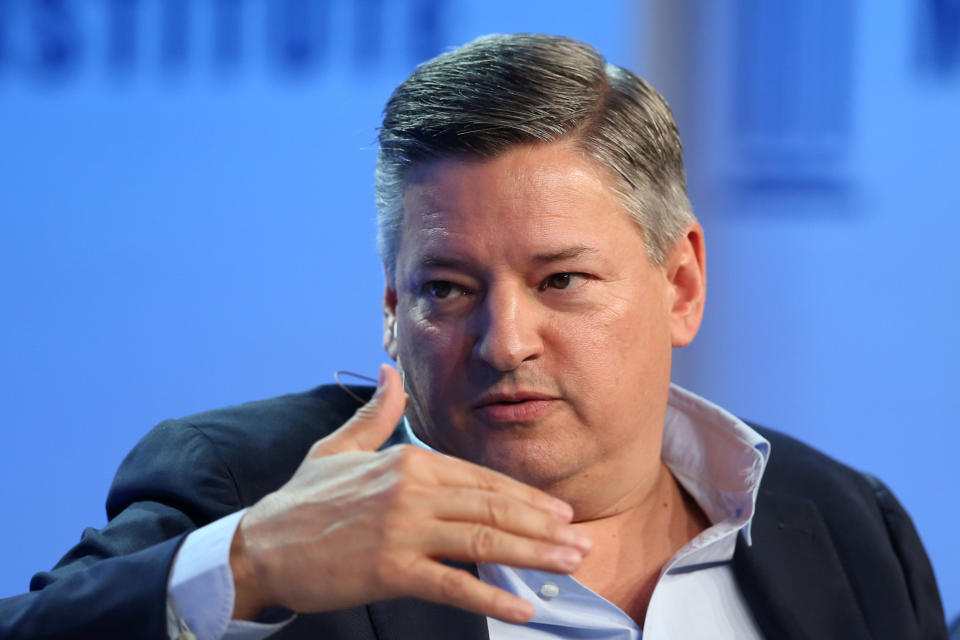How Apple and Disney are challenging Netflix's binge-watching model
Netflix, once the disruptor on the streaming scene, has become the ultimate incumbent. Instead of cable television, consumers now face the dilemma of picking and choosing (and sharing passwords to) a new crop of content creators: Amazon Prime (AMZN), Apple TV+ (AAPL), Disney+ (DIS), Hulu, and the forthcoming NBC (CMCSA) and HBO Max (T).
Given Netflix’s (NFLX) head start in both building the streaming platform and making original content, the company has been an influential player in establishing the new rules of the previously uncharted territory. The most significant change between the TV experience then and now is the advent of binge watching, which is when you watch multiple episodes of a show in a row.
With binge watching, viewers get hooked on a show and staying glued to their TVs as one episode blurs into the next. But they also allow viewers to sign up for a free trial period and unsubscribe after a weekend of binging.

For its part, Netflix might not have to worry about people binging and bailing as its library is massive and viewers will likely move on to another show to devour. New players Apple TV+ and Disney+ are experimenting by going back to traditional models of television — choosing to adopt weekly release strategies to make it harder for users to leave after watching a show in one sitting.
The concept of mindlessly continuing onto another episode — or two, or four, or the whole season(!) — has become an area of scrutiny among academics and health advocates alike. Two professors at Michigan State University conducted a study that essentially found binge watching is associated with unhealthy behavior, and ultimately, bad habits.
“Binge watching is associated with detrimental health behaviors such as foregoing sleep in order to continue watching, selecting unhealthy meals, unhealthy snacking and sedentary behavior (i.e., sitting too long, less exercise),” according to co-author Morgan Ellithorpe.
Still, despite these not-so-shocking correlations, binge watching certainly had become the new normal. That is, until the new platforms started implementing the weekly release model.
To binge or to savor?
Overall, Americans want to devour the series du jour. According to a September CivicScience study of 1,300 respondents age 13 and older, 51% prefer that episodes of a TV show are made available all at once.
While only 33% of Americans over the age of 65 prefer the all-at-once option, 69% of younger millennials between 25 and 29 years old favor that choice. What’s particularly notable from the market research firm’s study, however, is that Gen Z respondents (between 13 and 18 years old) actually are the most likely demographic to prefer to view shows a few at a time, and not a one-time availability.
“Consumers clearly prefer all at once so they can plan however they want. You don’t have to binge all at once,” says Rich Greenfield, veteran media analyst and co-founder of LightShed Partners.
People seem to like to have the option to view all episodes in one sitting — but that doesn’t mean they actually want to do so. Still, it’s clear that the general philosophy of whether to facilitate binge watching is still evolving, and often it depends heavily on the cachet and format of the show.

Just three years ago, Netflix’s head of content Ted Sarandos said there is no reason to ever revert back to the weekly programming slate of TV.
“The move away from appointment television is enormous. So why are you going to drag people back to something they’re abandoning in huge numbers?” he said in an interview with HitFlix.
But then this September, the pioneer of binge watching changed its stance on binge watching. Episodes of the popular “Great British Baking Show” were released every Friday. Given the surprise-focused nature of Netflix’s first original music competition, episodes of “Rhythm and Flow,” were made available every Wednesday night, following the model of traditional TV’s “The Voice” or “American Idol.” But according to the company, those two are exceptions to the general rule that binging is the way to go.
the weekly release of licensed titles (like Great British Baking Show) isn't new and in hopes of keeping Rhythm + Flow's winner a surprise, we're trying something new! but not happening with more shows than that
— Netflix US (@netflix) September 3, 2019
“For Netflix with its depth of content and treasure trove of data on its users or subscribers, it has less to lose by releasing a season at a time, as it did recently with ‘The Crown,’ for example. It has good reason to believe that subscribers will move on to the next series or films because the collection is so large,” says Bankrate.com’s senior economic analyst Mark Hamrick.
Roll-out experimentation
Meanwhile newer platforms are taking more of a cautious strategy. Take, for example, the much-marketed, star-studded “The Morning Show” by Apple TV+. The first three episodes were immediately available on launch day, but subsequent episodes are being released on a weekly basis.
Disney+ reached 10 million subscribers within a day of launch, some of whom saw their accounts hijacked, showing there is appetite for the studio’s strong mix of IP, which now includes Fox assets like “The Simpsons.” Disney is releasing originals like “The Mandalorian,” a space western set in the “Star Wars” universe, just one episode at a time.
“It makes sense to stretch out a series like ‘The Mandalorian,’ essentially one episode a week from here on out, to prevent users from disengaging more quickly than they might otherwise. If anything, it will probably prompt a good number of users to further explore the programming to see what else they want to watch until the next episode hits,” Hamrick says.

“Disney has the added incentive of being a multifaceted entertainment conglomerate, where the TV programming reinforces interest in films released theatrically as well as theme park content, as in the case of Star Wars, Marvel and Pixar, among other aspects,” he adds.
The roll-out of HBO’s smash hit “Game of Thrones” proved that people are willing to wait until Sunday evening — even making it a ritual of sorts — to get their dragon fix and chat about it over coffee with colleagues the next day.
Up until now, HBO has stuck to a weekly release model. But with its new service HBO Max launching next year, it will have to get users to justify another addition to its bundle.
“It might well be as streaming services become more prevalent that providers will need to more strongly consider incentives to prevent subscribers from cancelling until the next series of interest hits. It is easy to see why Disney is pushing an annual charge to prevent consideration of cancellation,” says Hamrick.
And as more “must-see TV” options come to our attention, we can only imagine that the giants will iterate until every potential long-term subscriber is accounted for.
Melody Hahm is Yahoo Finance’s west coast correspondent, covering entrepreneurship, technology and culture. Follow her on Twitter @melodyhahm.
Read more:
Sonoma chefs grapple with ‘new reality’ of doing business among wildfires
Will Smith explains what it takes to get people off their couches and into the movie theater
How Reddit avoids content moderation woes of Facebook, Twitter, and YouTube
Taskrabbit founder on Uber, Lyft: ‘Sometimes you have to trade growth for profitability’